We’d just arrived in San Martin the day before, fresh off a good night’s sleep after enduring a marathon series of flights pushed together tightly to avoid a planned airline strike in Argentina (while the strike was a major pain, we were both grateful that airline unions had the courtesy to let us know ahead of time). We had a day to kill before the rest of the crew showed up to chase trout with our hosts from Patagonia River Guides, and we were up for anything.
Peter picked us up in front of the hotel for a drive into the northern Patagonian mountains, nearly to the border with Chile, to fish Tromen Lake at the base of Mount Lanin, a volcano that defines the stark, rugged landscape of this stretch of the fabled region. We were scheduled to take a boat out onto the lake and cast to cruising browns and brook trout, and as we drove into Lanin National Park among the araucaria trees, we’d occasionally catch of glimpse of the storied Malleo River off to the right.
“Does anybody ever fish that stretch of river?” Chad asked Peter. “It looks fantastic.”
Indeed, it did. Miles of transparent pocket water broken up by falls and rapids, pocked by massive boulders, the Malleo through the park looked just like what you’d expect a small, Patagonian headwater to look like. Damn fishy.
“We do sometimes,” Peter said in nearly perfect English. “It’s tough wading, though. We don’t take too many clients there because it’s hard to fish.”
Chad and I exchanged glances. Few clients. Tough wading. Hard to fish.
“Sounds perfect,” I said.
We arrived at the lake and realized immediately that this was going to be non-starter. A brisk autumn wind was busy blowing Tromen into a froth, and both Chad and I mentioned that, rather than brave this gale and risk swamping the boat, we’d be okay fishing the hard-to-wade, hard to fish stretch of the river that was tucked up under the trees and sheltered by the canyon.
Minutes later, I was sliding into a pair of Patagonia Rio Gallegos waders, equipped with the TIZIP front zipper (a new feature for me), wool-lined booties and what the company describes as “midweight fabric at the chest and heaviest weight fabric throughout the body.”
To say the waders felt sturdy is an understatement. Now, for clarity, I’m the kind of guy who goes through a new pair of breathables about every two years—I’ve never invested a small fortune into my wading gear because, A) I prefer to fish wet whenever possible—it’s just more comfortable, and B) if I’m wearing waders, it’s because it’s too damn cold outside to wade wet. And, as I’ve gotten older, the cold-weather fishing has started to lose its appeal.
All that said, it was full-on fall in Patagonia, and the water in the Malleo was in the low 40s after a few nights of frost hit Lanin. It was wader weather.
What works
First, I’m not sure how I ever tugged on a pair of waders without the zipper. Yes, the water was cold, but the day was warm—probably close to 75 degrees. To be able to simply unzip the front and remove the shoulder straps … I consider this a minor miracle and I’ve been kicking myself for not trying a pair of zipper-front waders until this year. It also makes it MUCH easier to take care of business after three glasses of malbec and a liter of water at lunch. So, yes, the zipper works.
Patagonia’s self-described “heaviest weight fabric” that’s coated with the company’s trademarked “H2NO” waterproof shell is also a plus. Sure, it works to keep you insulated, but so does a pair of fleece pants. The real appeal is the durability. How durable is it? Not minutes after I stepped into the chilled water the Malleo, my wading boots got stuck in the fine volcanic mud along the river’s edge, and I took a minor, but painful spill (and I remembered Peter’s words of caution when it came to tough wading along this stretch of river). My shin raked across a jagged rock so hard that I was sure the waders had sliced right open. Standing and smarting from the tumble, I looked down and found the waders perfectly intact. They stayed that way for the better part of the next two weeks, and arrived home in Idaho just as if they’d hardly been worn.
My shin? When I got back to the hotel that night, I noticed a nasty gash that is just now finally healing over (it’s been more than two months). Had I endured this gash anywhere other than Patagonia, I might have been tempted to get a few stitches to close it up. But I was fishing. In Patagonia. To hell with that.
Weight
The Rio Gallegos are, indeed, sturdy waders, and they’re not a light addition to a travel duffle. You pay for the “heaviest weight fabric” in actual weight, and for the durability, I’d say this is necessary compromise. The company did do a nice job using lighter-weight material above the waist to counter this somewhat, but there were times when I felt a bit over-equipped for the conditions. That said, having these waders on the shelf might actually make those February trips to the Henry’s Fork a bit more palatable in the future.

Construction quality
Patagonia was clearly going for “durable” when they launched the Rio Gallegos wader line, and it shows. The stitches and seams are tight and the zipper-front is totally waterproof. The shoulder straps are flexible, yet strong, and the wading belt has a strong clasp that didn’t fail once. I’ll be honest, when I put them on, they felt like the best pair of waders I’d ever donned, and that’s likely because of the obvious quality that went into the manufacturing. And, frankly, you should expect that when you pay $600 for a pair of waders.
Breathability
I put the Rio Gallegos through their paces on the trip to Argentina, and because of the autumn weather, I wore fleece long-johns under them every day. There were days when it rained and spit little ice flecks on us, and I was perfectly dry and comfortable. And there were sunny, warm days where I wished I’d been a bit less prepared. There’s nothing quite like that olfactory overload you get when you climb out of your waders and your entire lower half smells like a smelly foot. In short, yes, the Rio Gallegos breathe. Despite what they'd all like us to believe, no manufacturer has yet to come out with a “breathable” pair of waders that breathe just the right amount as dictated by climatic conditions. These are sturdy, well-built waders, sealed with Patagonia’s proprietary system. When something is as waterproof and tough as these waders are, chances are they’ll be a bit warm on the inside when it’s a bit warm on the outside.
Given their unquestionably bombproof construction, the Rio Gallegos breathe as well as can be expected and better than several less burly, more lightweight waders I’ve had on the water.
Fit
Even the world's most well constructed, feature-laden and high performance waders won't make your day on the water better if they don't fit well. Patagonia seems to understand this as well as anyone and offers a bevy of fit options with these waders. The Rio Gallegos are available in four different fit "styles" -- Regular, Short, Long and King -- with sizes within each style running anywhere from XS to XXL. If you're going to find a pair of off the shelf waders that fit just right, your chances of doing so here are as good as they are anywhere.
What doesn’t work
This might sound a bit odd, but I wore these waders for three days before I found the zippered pockets on the sides. I’m sure that’s largely due to the fact that I was so distracted by the fishing, and the fact that I wore a jacket over the waders more often than not. But, frankly, they’re in a weird spot—they’re too high on the rib cage, making me look like I was doing a weird rendition of the “Funky Chicken” when I tried to put my hands in them.
Another weakness you’ll likely notice is the little plastic pressure-zip compartment inside the waders. It’s presumably for displaying your fishing license or holding valuables that absolutely can’t get wet. It felt flimsy and unnecessarily included. I’d be happier with a full breathable pocket (or two small ones, given the zipper that separates the middle of the waders) rather than this little accessory that just seems excessive.
Final word
The Rio Gallegos are quality waders, and they better be at the asking price. Thanks to my experience with them, I can see the wisdom of investing more up front for good wading gear, especially if you wear waders often. They went from bushwhacking along the upper Malleo to climbing in and out of drift boats on the Limay and the Collon Cura to hiking across the steppe to chase brookies on the Corcovado. For me, they endured months worth of wading in just less than two weeks, and as I look at them on the shelf now, I don’t see much wear.
Patagonia has a reputation for quality when it comes to its fly fishing apparel, and the Rio Gallegos only add to that reputation.






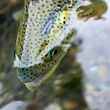



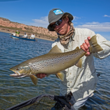




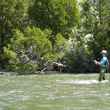



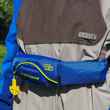
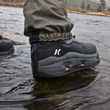



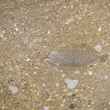
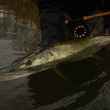
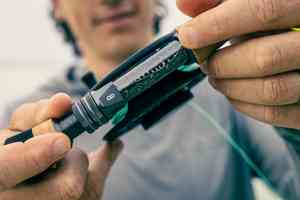
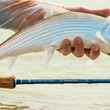



Comments